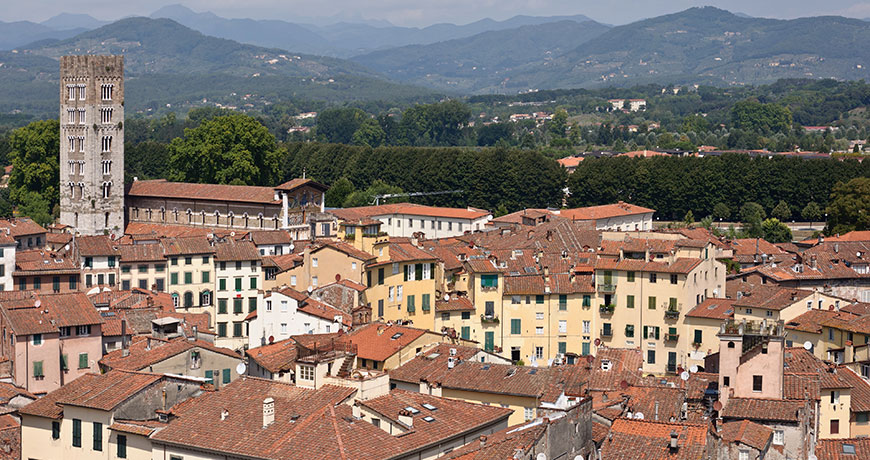Touristic information: Lucca

Lucca, of Ligurian origin, became a Roman colony in 180 BC and it was clearly important right from the beginning, from a logistical point of view, as they immediately built an amphitheatre and a theatre. Historical records, however, only started giving relevance to the city beginning with the Lombard domination, when it became the capital of Tuscia. After a temporary clouding over in the Carolingian age, Lucca returns to its fame through Countess Matilde di Canossa, who elected it as her residence during the periods she spent in the Tuscan Marquisate. Lucca was extremely rich during the 12th and 13th century for being the greatest silk producer in the West; upon the explosion of the rivalry between Guelphs and Ghibellines Lucca started a period of alternate fortune and changes of property. The city became free and independent only in 1400, and stayed that way for four centuries, until the arrival of Napoleonic troops in 1799; at the end of the Napoleonic domination, the dukedom passed to the Bourbon-Parma.
Lucca's historical centre is entirely surrounded by the walls erected between the 16th and the 17th century, so that entry to the city is necessarily through one of its six gates. The walls are fortified and lined with trees and it is a real pleasure to stroll along this path, admiring the beauty of Lucca's countryside on one side and the historical palaces on the other.
The most distinct sight, as well as the symbol of the city itself, is Piazza dell'Anfiteatro, which retraces the perfect ellipse of the ancient Roman amphitheatre. The square's current layout, which partially exploits the arches and vaults of the original structure, is the result of a skilful 19th century restoration.
The Duomo, named after San Martino, is the most beautiful example of Lucca art. The structure we can see today dates back to the beginning of the 11th century but the place used to hold an even more ancient church. The church is clearly Romanic, and reveals the Pisa influence in the façade, which is characterised by an open porch and three series of small loggias.
At the crossroads of the ancient Roman main ways, in the place that used to be the "forum", rises thechurch of S. Michele in Foro, which dates back to the 11th-12th century. The façade, very high and majestic, is made of seven arcades and four series of loggias, once more recalling the Pisa-Lucca style of the Duomo.
Since 1966 traditionally, between end October and beginning of November, Lucca hosts the most important national event dedicated to comics, illustration and animation: Lucca Comics. The market-fair is held at the Palasport, but the city centre is also involved in the event with various subject-related exhibitions.
A fixed appointment for the summer is the Palio di San Paolino, held every 12th of July. Played between Lucca's Compagnia dei Balestrieri in Piazza San Martino, it entails a pageant in the historical centre and then the real competition, in which the crossbowmen, representing the various city districts, test their ability and their precision.
